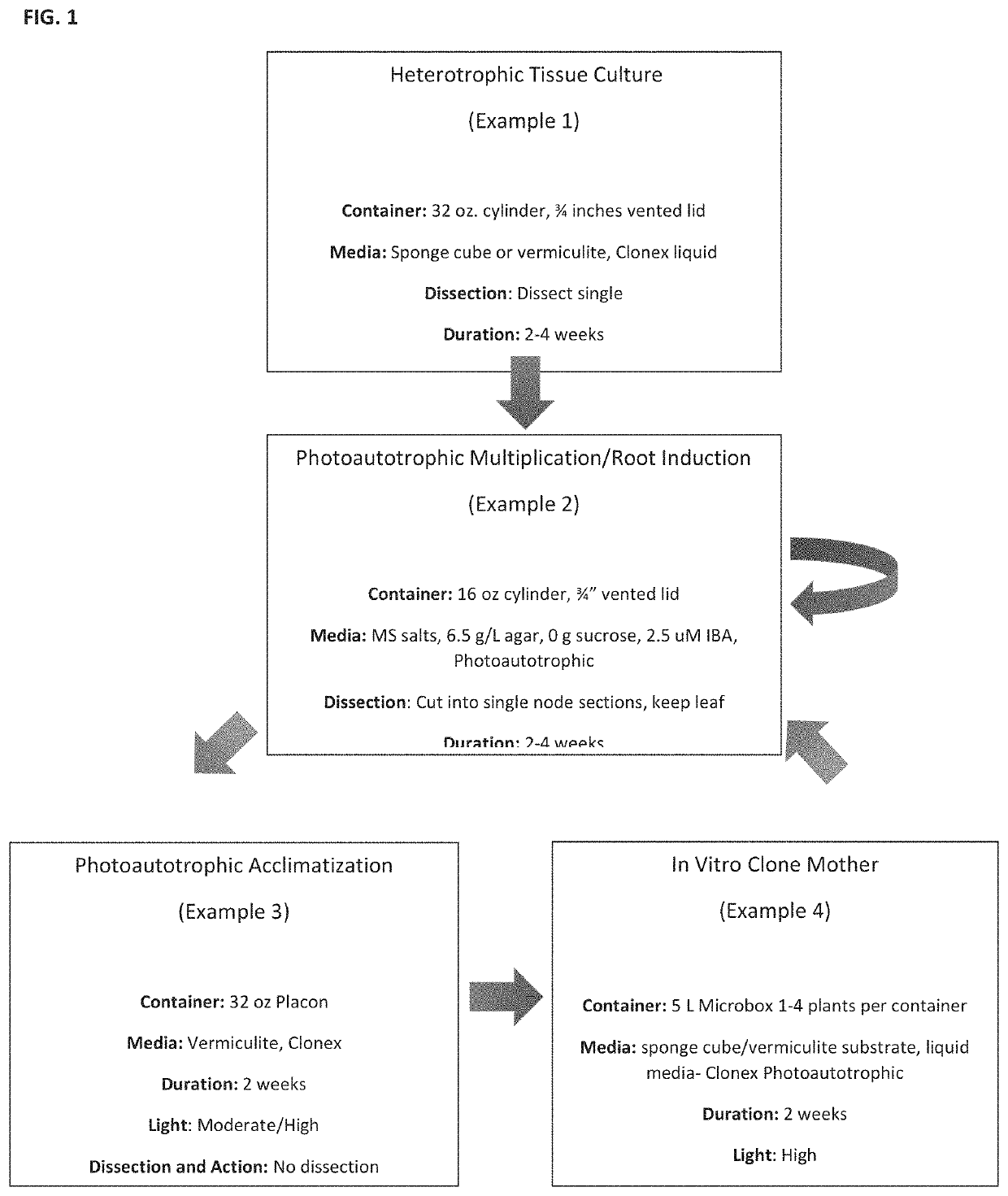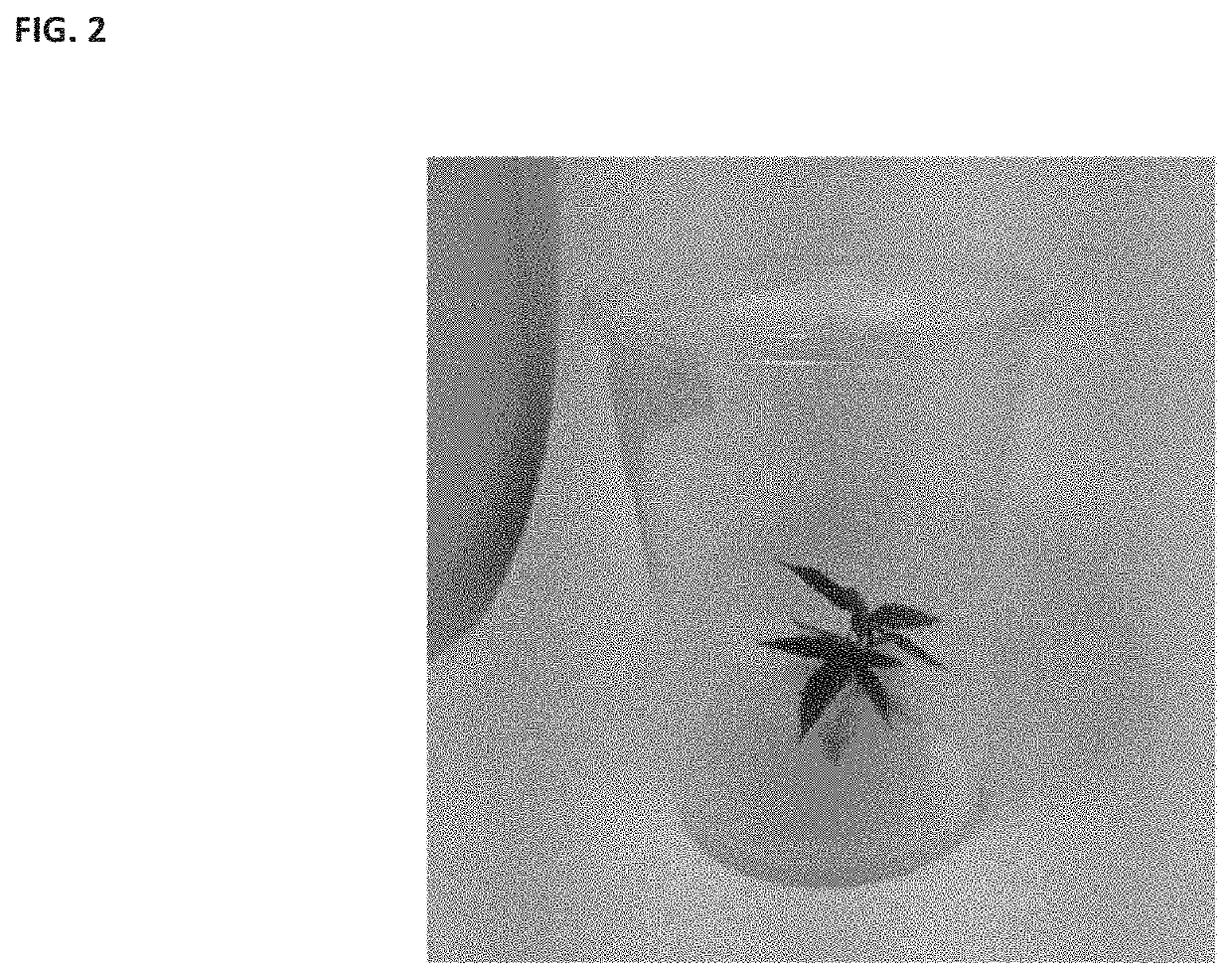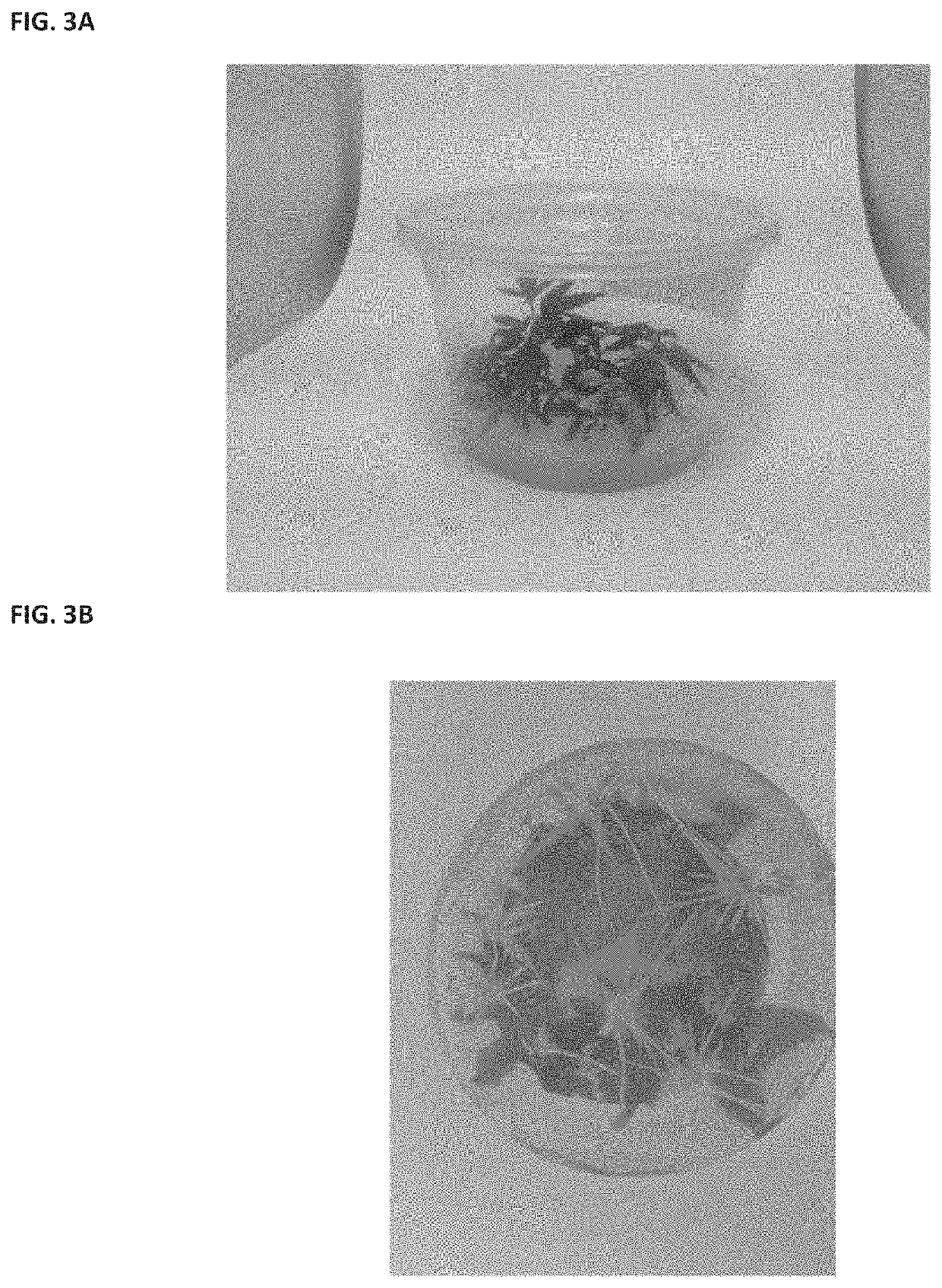In-Vitro Photoautotrophic Propagation of Cannabis
- Summary
- Abstract
- Description
- Claims
- Application Information
AI Technical Summary
Benefits of technology
Problems solved by technology
Method used
Image
Examples
example 1
phic Tissue Culture
[0090]The first phase of the propagation process is to procure plantlets from traditional tissue culture. This process is comprised of four steps: initiation, elongation / multiplication, rooting, and acclimatization. This process is described by Lata et al., 2009. Using sanitized shears, node segments or branches are procured from a healthy mother plant with desirable traits. In some embodiments the mother plant is selected on the basis of its chemical profile using gas chromatography—mass spectrometry) high-yielding C. sativa variety grown in an indoor cultivation facility. In some embodiments, the mother plant is provided by the farmers interested in propagating the strain of interest. In some embodiments, the mother plant is procured from a plant dispensary such as Harborside, Oakland, Calif.
[0091]The cut sections are washed in an oxidizing solution such as bleach and a detergent solution to disinfest and remove all fungus, insects and bacterial contamination. T...
example 2
trophic Multiplication / Root Induction Gel
[0096]Plants create energy for growth using a two-phase process: photosynthesis and cellular respiration. Photosynthesis occurs in chloroplasts inside the leaf of a plant, converting carbon dioxide and water into sugar using the energy from the sun. Cellular respiration then breaks down the sugars using oxygen into usable energy in the form of Adenosine triphosphate (ATP) with water and carbon dioxide as a by-product. Plant tissue culture achieves rapid growth of plant parts that would usually perish by subverting photosynthesis altogether and delivering sugars directly to the plant itself. Such a process of growth is referred to as heterotrophic tissue culture, since photosynthesis isn't completely turned off but drastically decreased.
[0097]Heterotrophic tissue culture recognizes that the overall amount of sugars in the cells of plant in-vitro are a combination of overall photosynthesis and the amount of sugars delivered directly to the plan...
example 3
trophic Acclimatization
[0100]The second step of photoautotrophic propagation process comprises the acclimatization process. The rooted plantlets or propagules are removed from the root induction media of Example 2 and placed into the dibble hole of the sponge cube in a growth vessel containing 150 mL of sterile low-strength liquid hydroponics media. The growth vessel is covered with a 0.2-micron pore size vented lid of a diameter of 3.175 centimeters. The acclimatization process can be performed using any non-gel solid or aggregate substrate such as rockwool or vermiculite and several other nutrient solutions commonly known in art. The growth vessel is as seen in FIG. 4 is then placed under light conditions with a flux of 40-60 μmol / m−2 / s−1for 5-10 days and then moved to stronger light of 100-150 μmol / m−2 / s−1. Movement from these different light levels can be modulated depending on preferred growth morphology of the plant and according to maturity and rapidity of growth. Once desire...
PUM
 Login to View More
Login to View More Abstract
Description
Claims
Application Information
 Login to View More
Login to View More - R&D
- Intellectual Property
- Life Sciences
- Materials
- Tech Scout
- Unparalleled Data Quality
- Higher Quality Content
- 60% Fewer Hallucinations
Browse by: Latest US Patents, China's latest patents, Technical Efficacy Thesaurus, Application Domain, Technology Topic, Popular Technical Reports.
© 2025 PatSnap. All rights reserved.Legal|Privacy policy|Modern Slavery Act Transparency Statement|Sitemap|About US| Contact US: help@patsnap.com



